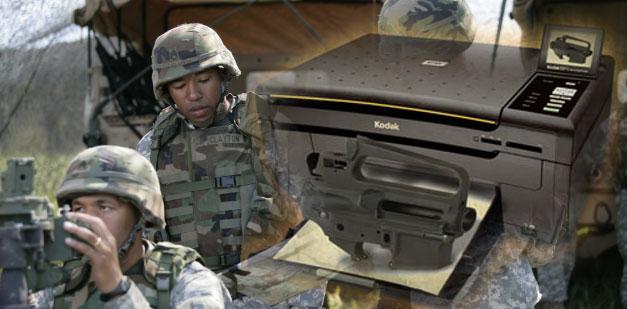“One of the benefits of being able to precisely control the way that a munition or warhead is ‘grown’ through additive manufacturing is that we think we’ll be able to tailor the blast and associated fragmentation to achieve specific effects for particular targets, heights, collateral damage, or even environmental considerations. Some of this can be done currently with very expensive, hand-made munitions, but [additive manufacturing] allows us to do it better, faster, and likely cheaper.”
Many people think of bombs as being something that doesn’t need a great deal of finesse – the bigger the explosion, the better. But that isn’t always the case, and the military is actively looking for ways to more closely tailor its explosions so that it doesn’t extend the damage any farther than it needs to in order to achieve its mission. While this doesn’t make blowing things up a friendly exercise, it’s hard to argue against improvements that might not only reduce damage but help save innocent human lives.
 The capacity that 3D printing has for making these more customized explosives is not fully understood yet, but that’s exactly why Wood wants to begin to work with the technology right now. These kinds of things take a great deal of time to develop and the military thinks long term, as Wood explained to Military.com:
The capacity that 3D printing has for making these more customized explosives is not fully understood yet, but that’s exactly why Wood wants to begin to work with the technology right now. These kinds of things take a great deal of time to develop and the military thinks long term, as Wood explained to Military.com:
“General Dana’s insight was, most of my capabilities development takes 10 to 20 years. So if I don’t start my experimentation and my advocacy for those things now, I’m not going to be able to really capitalize on what they can offer when they mature. We are fully aware that it’s expensive, and it’s not as mature as we want, but that’s exactly why we think now is the perfect time to strike so we can figure out this very protracted capabilities development process.”
I am sure the pun was unintended.
 The other aspect of 3D printing that is particularly appealing to the military is the potential it has for use in the field. Replacement parts and spur of the moment jigs can be created with a single tool in a way that has never been possible before. Some of this is already happening, as there are now several maintenance fleets as well as special operation command, infantry, and intelligence units currently equipped with the technology. As of now, 3D printed parts in use must designate their AM status through the use of non-standard colors (e.g., yellow, green) so anyone coming in contact with these components immediately recognizes how they were manufactured.
The other aspect of 3D printing that is particularly appealing to the military is the potential it has for use in the field. Replacement parts and spur of the moment jigs can be created with a single tool in a way that has never been possible before. Some of this is already happening, as there are now several maintenance fleets as well as special operation command, infantry, and intelligence units currently equipped with the technology. As of now, 3D printed parts in use must designate their AM status through the use of non-standard colors (e.g., yellow, green) so anyone coming in contact with these components immediately recognizes how they were manufactured.
All in all this paints a picture of a technology that will be a very useful tool for military operations on a number of levels. A concerted effort is currently being put into understanding what the overall 3D printing policy will look like, but it appears that there is no longer any doubt of the technology’s potential for assisting the military to achieve its goals. Discuss in the 3D Printed Munitions forum at 3DPB.com.
[Source: Military.com]Subscribe to Our Email Newsletter
Stay up-to-date on all the latest news from the 3D printing industry and receive information and offers from third party vendors.
You May Also Like
3D Printing Financials: Fathom Struggles in Financial Quicksand During Critical Transition
Facing a year of key transitions and financial pressures, Fathom (Nasdaq: FTHM) has filed its annual report for 2023 with the U.S. Securities and Exchange Commission (SEC). The document outlines...
Latest Earnings Overview for Australian 3D Printing Firms Titomic and AML3D
Australian 3D printing manufacturing firms Titomic (ASX: TTT) and AML3D (ASX: AL3) reported their financial results for the period from July to December 2023, marking the first half of their...
3D Printing Webinar and Event Roundup: April 7, 2024
Webinars and events in the 3D printing industry are picking back up this week! Sea-Air-Space is coming to Maryland, and SAE International is sponsoring a 3D Systems webinar about 3D...
3D Printing Financials: Unpacking Farsoon and BLT’s 2023 Performance
In the Chinese 3D printing industry, two companies, Farsoon (SHA: 688433) and Bright Laser Technologies, or BLT (SHA: 688333), have recently unveiled their full-year earnings for 2023. Farsoon reported increases...
































